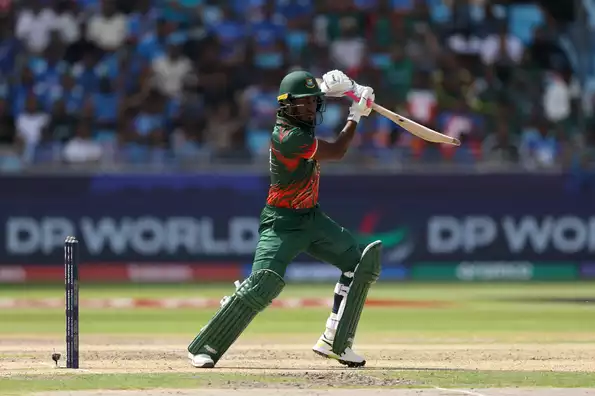Leadership transitions in cricket teams are more than just administrative changes—they reshape energy, communication, and the emotional rhythm inside the dressing room. When a new captain takes over, especially in a high-profile setup like India’s, the shift can influence everything from individual confidence to team bonding.
As seen in recent transitions, where established stars stepped aside for younger captains, the process brings both excitement and adjustment. The dressing room becomes a space of subtle evolution—old habits give way to new methods, and dynamics among players realign around fresh voices of leadership.
Understanding the Leadership Shift
When a captain changes, it’s not just a name on the toss coin that changes—it’s a culture reset. Each leader brings unique philosophies about preparation, communication, and man-management. A new captain may emphasize aggressive tactics, flexibility, or emotional expression, and these nuances ripple through the team environment.
For the senior players, it means adjusting from being advisors under one leadership style to aligning under another. For junior members, it’s often a mix of nervous anticipation and opportunity—they gain a fresh chance to prove themselves to someone who might view potential differently.
The Senior Players’ Perspective
Veteran cricketers play a dual role during leadership transitions. They are both stabilizers and silent influencers, bridging the gap between the past and the future.
- Adaptation Over Ego: Seniors often must adapt to younger captains who may introduce new strategic models. Balancing experience with humility becomes key.
- Mentorship Role: Many seasoned players embrace a mentor-like function, ensuring continuity in the team’s emotional balance.
- Reduced Administrative Burden: Without leadership pressure, some veterans find new freedom to focus purely on performance and mentoring.
Still, transitions can be sensitive if senior members feel underutilized or sidelined. Effective communication from new captains helps preserve respect and inclusion.
The Junior Players’ Reaction
For younger cricketers, leadership changes can bring both excitement and uncertainty.
- Fresh Evaluation: New captains often reassess team roles, which can open doors for players previously overlooked.
- Enhanced Motivation: Younger players tend to respond well to captains closer to their age group, as communication feels more direct and relatable.
- Evolving Hierarchies: Leadership shifts sometimes flatten hierarchies, making the dressing room atmosphere more democratic and less intimidating.
The enthusiasm juniors bring also injects renewed energy into the team’s culture. They view the change as a fresh beginning—a moment to define their place in the setup.
Building Team Chemistry After Transition
Harmony in the dressing room depends on how smoothly leadership transitions are managed. The best captains treat the first few weeks as a listening phase—observing personalities, understanding preferences, and maintaining transparency.
- Respecting Legacy: A new captain who acknowledges the contributions of previous leaders earns instant trust.
- Open Communication: Addressing tactical and personal expectations early prevents speculation and tension.
- Involving Seniors: Retaining experienced voices in decision-making balances innovation with stability.
- Team-Building Sessions: Off-field bonding—shared meals, open discussions, and lighter moments—helps reset group morale.
These steps ensure that players don’t feel displaced by the change but rather inspired to adapt together.
The Role of Support Staff
Behind every successful leadership transition lies a proactive support system. Coaches, psychologists, and team managers often help maintain mental stability during uncertain phases.
- Coach’s Mediation: The head coach bridges communication between captain and players, especially when emotions run high.
- Performance Analysts: They provide objective insights that help the new captain make informed decisions without bias.
- Team Psychologists: Their guidance ensures individuals manage anxiety and focus on process rather than hierarchy.
When the support staff complements leadership seamlessly, the dressing room remains a space of trust and ambition.
Maintaining Continuity and Momentum
The biggest test of a leadership shift is whether it disrupts or enhances team performance. Successful teams maintain continuity in preparation and execution despite new voices at the helm.
Captains who emphasize collaborative leadership—encouraging input from seniors and feedback from juniors—tend to achieve quick cohesion. Transitioning teams that preserve shared values (discipline, unity, respect) rarely lose momentum.
For India, the cultural strength of its dressing room—built on years of shared victories and challenges—often softens the turbulence of change.
Emotional Layers Behind the Scenes
Inside the dressing room, emotions often oscillate between pride, nostalgia, and optimism. Players who grew under the previous captain might initially feel sentimental, while those awaiting fresh chances brim with anticipation.
The best teams allow space for both feelings to coexist. It’s this blend of legacy and vision that keeps the environment positive. Leadership transitions, when handled with empathy, become moments of renewal rather than disruption.
Final Thoughts
The dressing-room atmosphere after a leadership transition mirrors the emotional heartbeat of a team. When respect, communication, and clarity guide the process, both seniors and juniors thrive. The key lies in viewing change not as a break from the past but as a continuation of collective progress.
For cricket followers tracking such behind-the-scenes dynamics, the Kheloexch 99 network and Kheloexch platform provide engaging coverage, leadership analysis, and player insights. Users with a Kheloexch Login can explore team culture stories, leadership trends, and exclusive interviews that capture the pulse of modern cricket—from the tactics on the field to the emotions within the dressing room.


